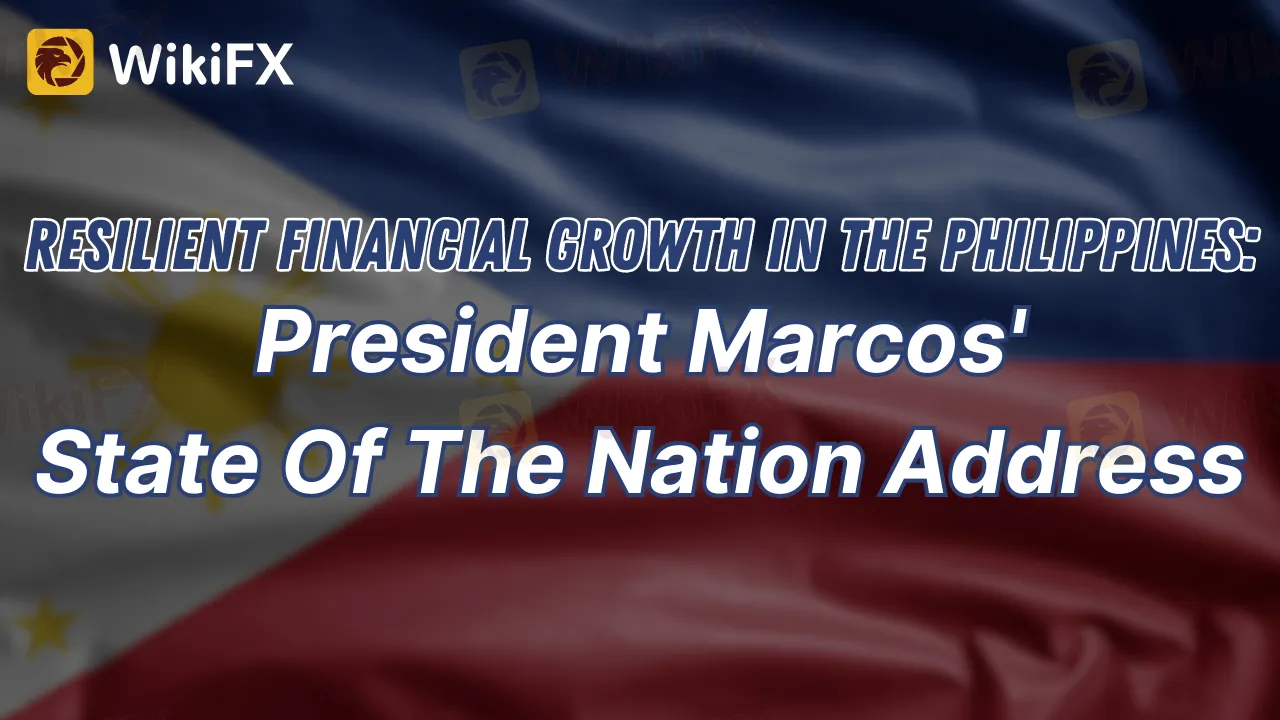简体中文
繁體中文
English
Pусский
日本語
ภาษาไทย
Tiếng Việt
Bahasa Indonesia
Español
हिन्दी
Filippiiniläinen
Français
Deutsch
Português
Türkçe
한국어
العربية
Resilient Financial Growth In The Philippines: President Marcos' State Of The Nation Address
Abstract:In his latest SONA, President Marcos outlines the Philippines' resilient financial growth, showcasing a robust economy and future prospects amid global challenges.

MANILA, Philippines — President Ferdinand Marcos Jr. articulated a story of a resilient Philippine economy that has flourished in the face of global uncertainty in his second State of the Nation Address (SONA) on Monday. With a spectacular GDP growth rate of 7.6% in 2022 - a peak not witnessed in the previous 46 years - the President portrayed a rosy picture of financial progress in the Philippines.
As President Marcos emphasized, the Philippines' economic growth story isn't merely about the numbers. It's about the resilience shown by the nation in the face of considerable global headwinds. Despite adversities like the COVID-19 pandemic, the country has managed not only to stay afloat but to remain among the fastest-growing economies in Asia and the world at large.

At the heart of this economic success, as per the President, is the nation's robust financial system. The banking sector, or “the transmission arms of our monetary policy,” as Marcos stated, boasts strong capital and liquidity positions. These financial pillars have allowed the economy to remain stable and maintain growth momentum.
Equally vital to this recovery and growth story is the role of the digital economy. In the President's words, it has been a “pivotal player,” contributing a significant P2 trillion, approximately 9.4% of the GDP, in 2022 alone. This figure, according to President Marcos, is a testament to the economy's revitalization and rejuvenation, facilitated by a favorable environment and robust rule of law.
Looking ahead to 2023, the World Bank's projections for the Philippine economy continue to be encouraging. An expected growth rate of 6%, well within the governments target range of 6-7%, underscores the country's promising economic outlook. This growth is likely to be propelled by robust local demand, an expanding Business Process Outsourcing (BPO) industry, a steady flow of remittances, and a sustained recovery of jobs.

Even the country's inflation rate is trending upward. The rate began the year at a high of 8.7% and had fallen to 5.4% by June. The Bangko Sentral anticipates further relaxation to 2.9% by 2024, bolstering the country's financial stability.
President Marcos reaffirmed the administration's commitment to doing all possible to promote economic growth. Public infrastructure, food, education, health, employment, and social protection continue to be top priorities, accounting for more than 70% of the national budget.
An essential part of the financial growth narrative is the increase in government revenue generation. Marcos took the opportunity to highlight the record collections by the Bureau of Internal Revenue and the Bureau of Customs, contributing significantly to the nation's economic coffers.
The President also used his address to appeal to Congress for continued support of his administrations policies and reforms. With a vision to increase tax and revenue efforts to 16.9% and 17.3% by 2028 respectively, Marcos outlined a strategy that is expected to significantly bolster public investments in the coming years, thereby promoting sustained financial growth in the Philippines.
For all the latest news updates, download and install the WikiFX App on your smartphone. Download the App here: https://www.wikifx.com/en/download.html.

Disclaimer:
The views in this article only represent the author's personal views, and do not constitute investment advice on this platform. This platform does not guarantee the accuracy, completeness and timeliness of the information in the article, and will not be liable for any loss caused by the use of or reliance on the information in the article.
Read more

Safe-Haven Surge: Gold Shines Amid Market Turmoil
Rising geopolitical tensions fuel a flight to safety, propelling gold past key resistance and positioning it as a top-performing asset in today’s volatile market.

Forex Trading Challenges in India
Explore this guide to understand the challenges that deter India's forex market from unleashing its true potential.

The Deepening Roots of Forex Scams in India
Check out how forex scams in India have expanded beyond banks and unregistered brokers to include the informal gang racket duping investors every day.

Important Statement on the Authenticity of WikiFX Score and Broker Reviews
WikiFX is committed to enhancing transparency and security in the forex industry through technological means and publicly available data. We firmly believe that fair information disclosure and a scientific evaluation system can genuinely safeguard investors’ rights and boost the healthy development of the industry.
WikiFX Broker
Latest News
Safe-Haven Surge: Gold Shines Amid Market Turmoil
Why Your Stop Loss Keeps Getting Hit & How to Fix It
Indian "Finfluencer" Asmita Patel Banned: SEBI Slaps Charges on Her Company, AGSTPL
HDFC Bank's Green Push: Empowering 1,000 Villages with Solar Energy
MetaQuotes Rolls Out MT5 Build 5120 with Enhanced Features and Stability Fixes
Boosted by U.S. CPI, Yen May Rise Again
Global oil prices soar after Israel attacks Iran
Advantages of Using EA VPS for Trading - Detailed Guide
$1.1 Million Default Judgement Passed Against Keith Crews in Stemy Coin Fraud Scheme
U.S. consumer prices rose 2.4% in May, below expectations
Currency Calculator


